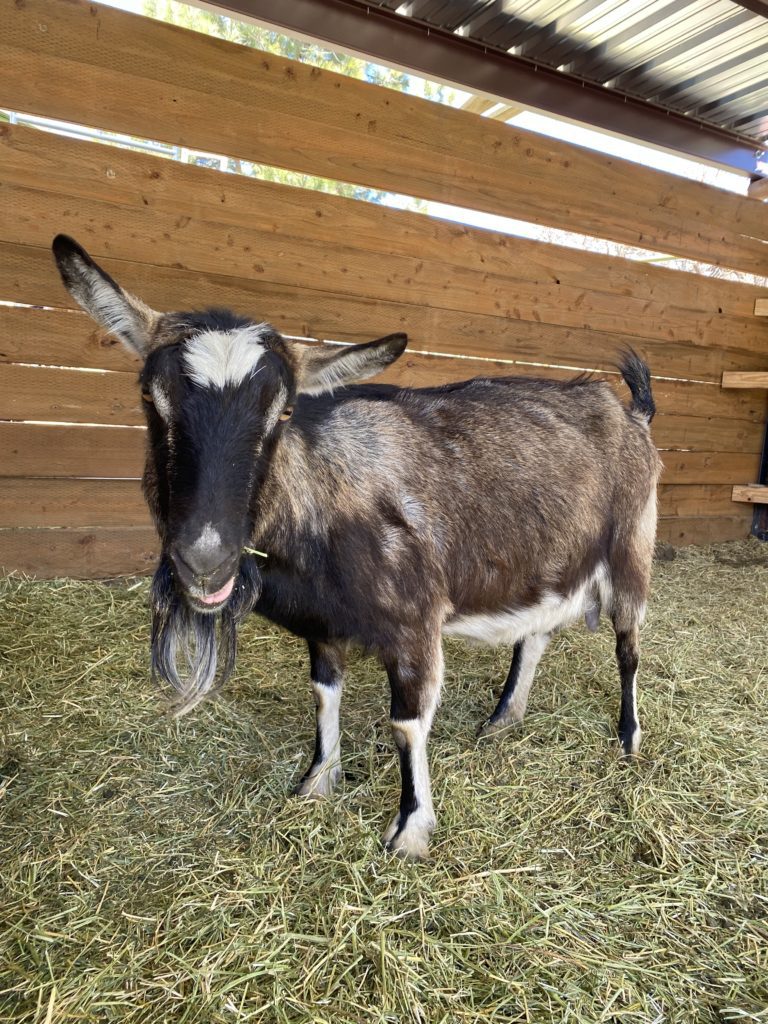--- Blog, Backyard goats, Pasture Life
Breeding Your Doe
Breeding Your Doe
Breeding your doe comes with lots of questions you may have. At packgoats.com we are dedicated to provide you with goat education through our membership, courses, free guides and more. Be sure to sign up for our newsletter to get information and deals!Testing For Diseases
There are three main diseases that you need to test your doe for prior to breeding. It is important for good herd management. If you find that you do have a doe with any of these disease, be sure to take the precautionary measures to ensure the kid does not also become infected. There is also the possibility of a false positive in does that are not nutritionally up to par, so be sure to retest if necessary.Caprine Arthritis Encephalitis Virus (CAE) is a viral disease commonly spread from a doe to her kid through the colostrum or milk. Click here for more detailed information on CAE.
Caseous Lymphadenitis (CL) is a bacterial infection that causes skin or internal abscesses. It can be transmitted from the doe to the kid through the mammary glands. For more detailed information on CL click here.
Johnes Disease is a chronic wasting disease caused by bacteria. An infected doe can spread it through milk or colostrum to her kid, but it is primarily spread through fecal contamination. Click here to learn more about Johnes.
Recognizing a Doe in Heat
Typically a doe will come into heat during the fall months (except for Nigerian Dwarfs). They will only be in heat for about 48-72 hours and the cycle will happen again after 21 days if not successfully bred.Signs a doe is in heat:
- “Flagging” is when a doe wags her tail excessively
- Mounting
- Overall change in temperament and behavior
- Can become more vocal
- Swollen vulva
- 24-48 hours after they go out of heat they will have a white discharge. 21 days later they will come back into heat if they were not bred.
Breeding Process
The most important and critical thing about the breeding process is getting a breeding date. This date helps you prepare for the delivery. There are different ways to facilitate the breeding process to be able to accurately get a date. Pen locations is one way.Pen locations can be helpful when it comes time to breed. The closer the bucks are to the does the more obvious the signs will be. You have to make sure that you have adequate fencing because bucks in rut will notoriously destroy fences.
Is Your Doe Pregnant?
One way to know if your goat is pregnant is by its heat cycle, also known as the Estrus cycle. If it was a success, 24-48 hours after they go out of heat they will have a white discharge. If not 21 days later they will come back into heat. To learn more about knowing if your goat is pregnant, check out our blog post 3 Ways to Know If Your Goat is Pregnant.Signs they are in their heat cycle. If your goat is bred you will not see these signs.
- Restless
- Seek out the buck
- Wag their tails
- Vocalize with bleating as if they are in pain
- Swollen Vulvas with clear mucous discharge that turns cloudy at the end of the cycle.
Learn More About Breeding Your Doe
Our new Goat Birthing Course consists of hours of video and picture content over the last couple of years! That’s right….this has been a 2-year project. From delivering single kids to triplets, we have video coverage of it all.- Breeding
- Preparations 30-45 days before delivery
- Kidding Supplies
- Stages of Labor
- Kidding Positions and Live Births!
- Post Birth Care
- Bonus Footage
At packgoats.com, we are committed to helping you learn and prepare for owning goats on your homestead. We are so excited to offer you this Goat Birthing Course and our A-Z Milking Goats Course in a bundle package! You have the opportunity at check-out to add our A-Z Milking Goats Course on for $63! This saves you $16.


